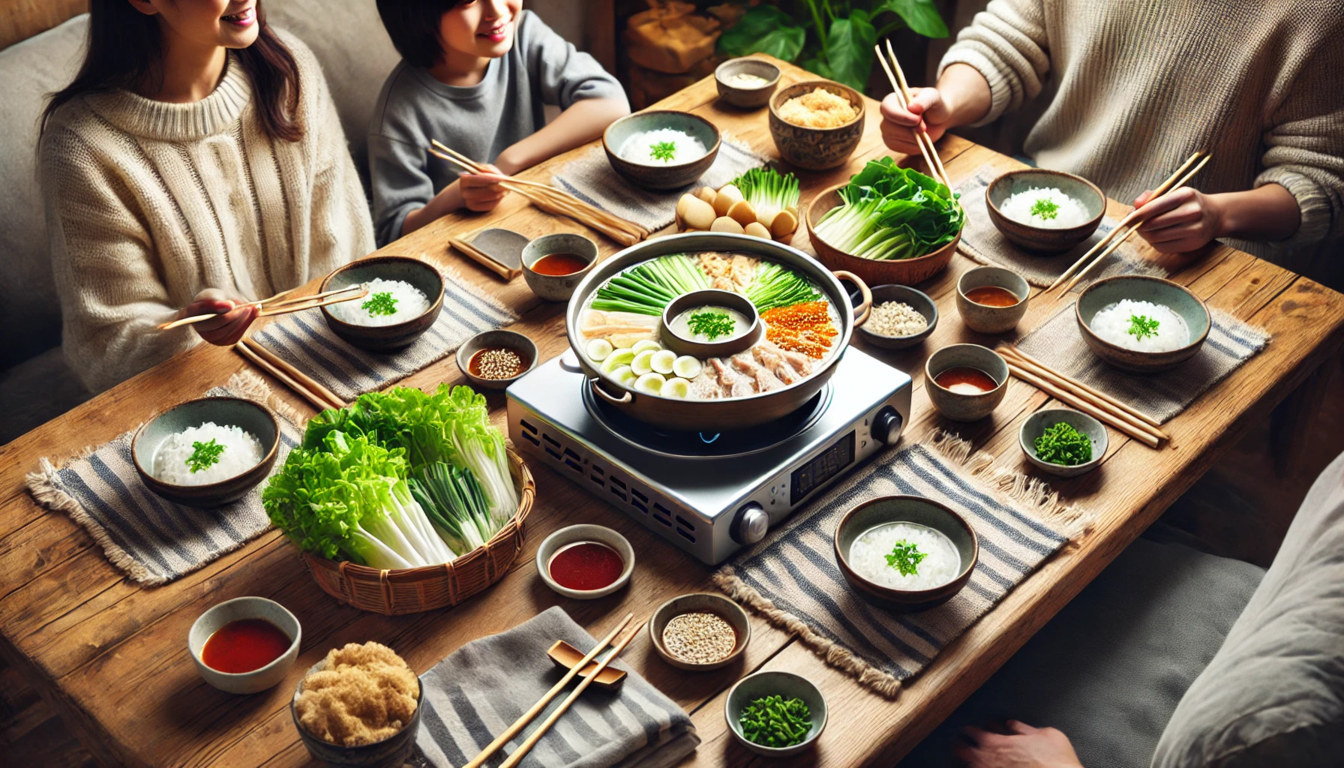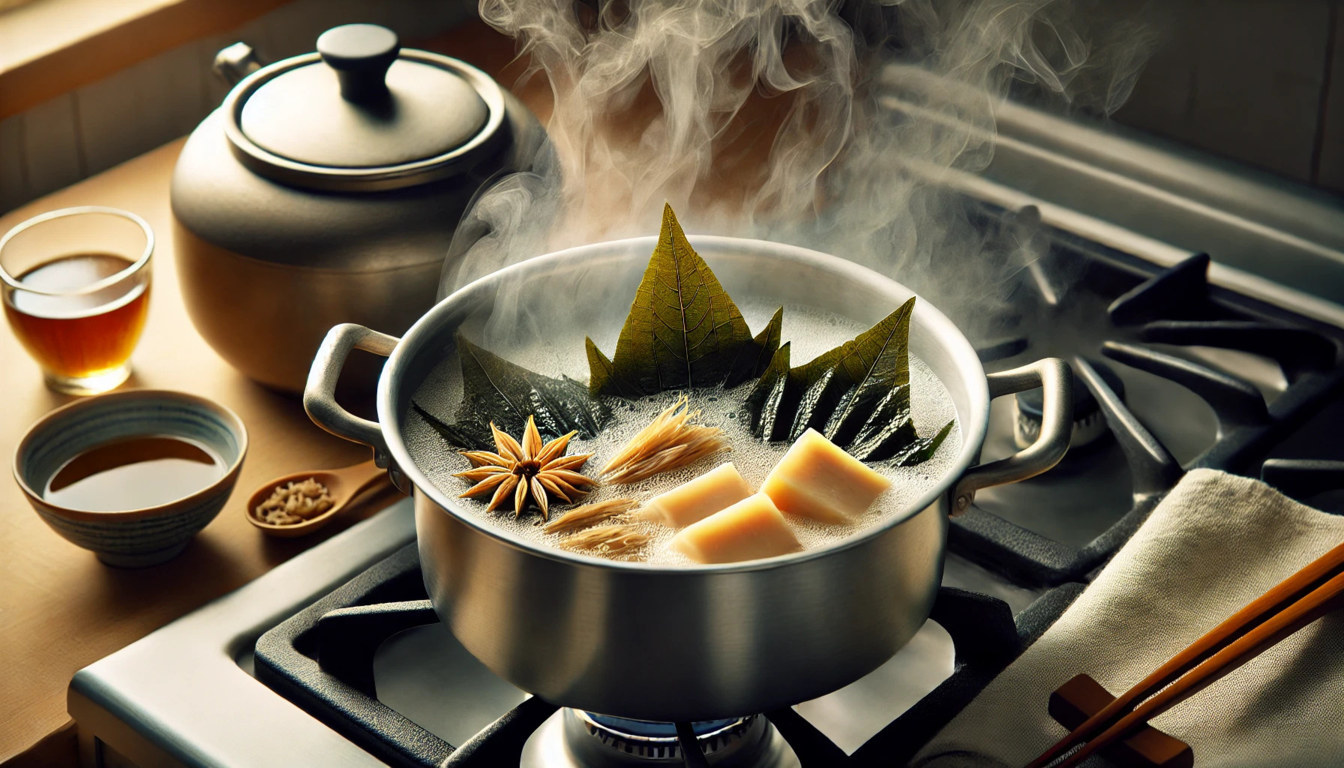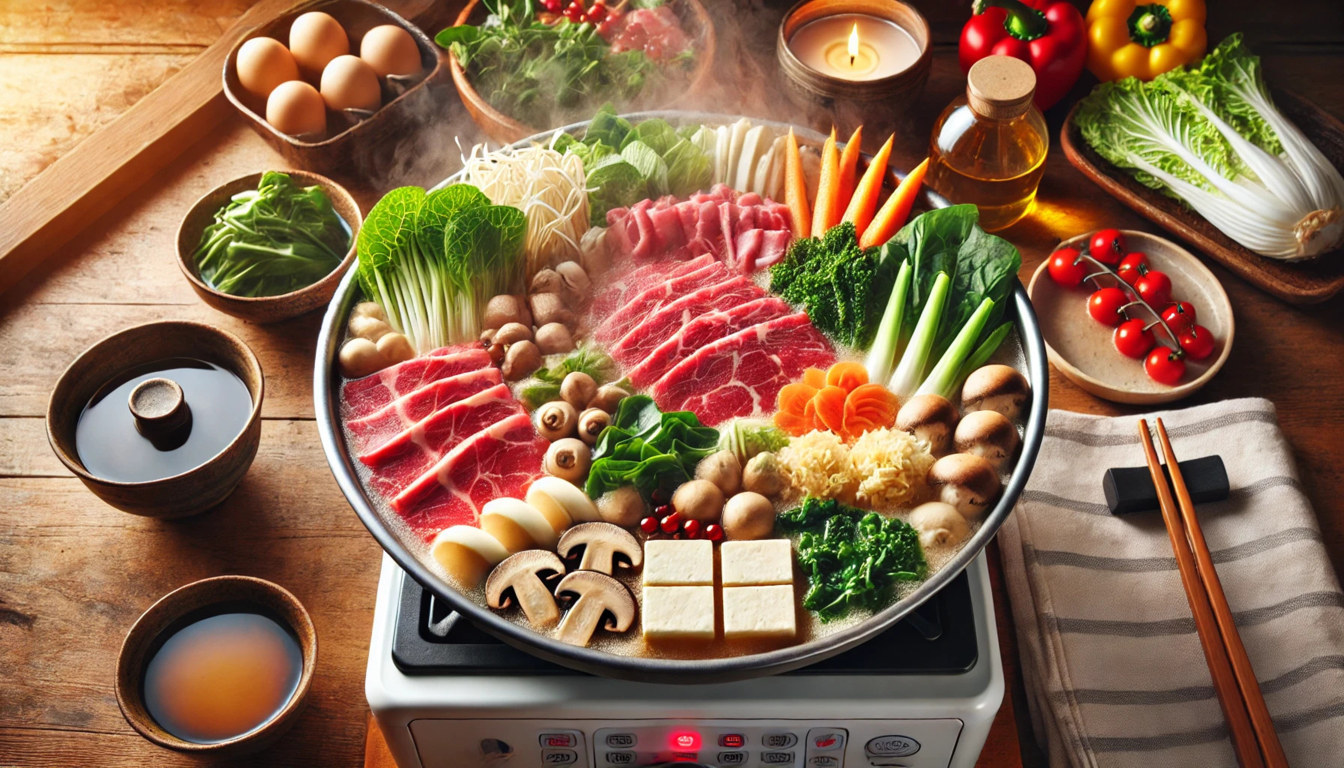How Can You Prepare Nabe Hotpot at Home?
In this blog, we aim to explore the various options available for enjoying Nabe Hotpot at home, this blog provides a comprehensive guide on how to prepare and enjoy Nabe Hotpot at home. Whether you're a fan of its rich broth or the fresh ingredients that make this dish a communal favorite, this blog will help you recreate the authentic flavors of Nabe Hotpot without stepping out of your kitchen.
Introduction to Nabe Hotpot: A Japanese Culinary Tradition
Nabe Hotpot, a quintessential Japanese dish, is a culinary experience that brings people together. It’s more than just a meal; it’s a tradition that embodies the warmth of family and the comfort of home-cooked food. The word "Nabe" translates to "pot" in Japanese, and this dish is all about cooking a variety of ingredients in a communal pot of simmering broth. Whether you’re gathering with friends or enjoying a quiet evening at home, Nabe Hotpot offers a delightful way to savor the flavors of Japan.
There are several types of Nabe Hotpot, each with its unique flavor profile and ingredients. From the simple and elegant Shabu-Shabu to the rich and savory Sukiyaki, there's a version of Nabe for every palate. But no matter the type, the essence of Nabe lies in its communal nature—everyone gathers around the pot, adding ingredients and enjoying the meal together.
Essential Ingredients for Preparing Nabe Hotpot at Home

To prepare an authentic Nabe Hotpot at home, you’ll need a selection of fresh ingredients that bring together a harmony of flavors and textures. The key to a successful Nabe lies in the quality and variety of its components.
Building the Perfect Nabe Broth
The foundation of any great Nabe Hotpot is the broth, and Dashi is the most common base. Dashi is made from Kombu (dried kelp) and Bonito flakes, offering a delicate umami flavor that serves as the perfect backdrop for the other ingredients. For a different twist, you can also use a Miso base, which adds a rich, savory depth to the broth. Alternatively, a clear broth seasoned with Soy sauce, Mirin, and Sake provides a lighter option.
Making the broth is simple: soak the Kombu in water for about 30 minutes, then bring it to a simmer before adding the Bonito flakes. Strain the mixture to get a clear, flavorful broth. For added depth, you can adjust the seasoning with Soy sauce and Mirin, tailoring it to your taste.
Key Proteins: Meat, Seafood, and Tofu
When it comes to Nabe Hotpot, the choice of proteins is crucial. Thinly sliced beef is a traditional favorite, especially in Shabu Shabu. The marbled fat of the beef enriches the broth as it cooks, adding a luxurious mouthfeel to the dish. Chicken, pork, and a variety of seafood such as shrimp and fish fillets are also popular choices, each bringing its unique flavor to the pot.
For a vegetarian option, Tofu is an excellent substitute. It absorbs the broth’s flavors beautifully while providing a soft, silky texture. Tofu can be cubed or sliced into thicker pieces, depending on your preference. Mushrooms, particularly Enoki and Shiitake, add an earthy flavor that complements both meat and seafood.
Fresh Vegetables to Enhance Your Nabe
Vegetables are a vital component of Nabe Hotpot, providing both flavor and nutrition. Chinese cabbage is a staple, offering a sweet, mild taste that mellows as it cooks. Daikon radish is another must-have, imparting a slight bitterness that balances the richness of the broth. Carrots add a touch of sweetness and color, while Enoki mushrooms contribute a delicate, nutty flavor.
Cut the vegetables into bite-sized pieces, ensuring they cook evenly and quickly in the broth. The variety of textures—from the crunchy carrots to the soft mushrooms—creates a well-rounded dish that’s both satisfying and nutritious.
Noodles and Rice for Nabe
No Nabe Hotpot is complete without a starch to round out the meal. Udon noodles, thick and chewy, are a classic choice that absorbs the broth’s flavors beautifully. If you prefer something lighter, Shirataki noodles, made from konjac, are a low-calorie alternative that still adds texture to the dish.
Rice is another option, particularly when preparing Zosui—a porridge made by adding cooked rice to the remaining broth at the end of the meal. This method ensures that none of the delicious broth goes to waste, creating a comforting and filling conclusion to your Nabe experience.
Step-by-Step Guide to Preparing Nabe Hotpot

Now that you have your ingredients ready, it’s time to prepare your Nabe Hotpot. The following steps will guide you through the process, ensuring a delightful and authentic dining experience.
Preparing the Broth
Start by preparing the broth, which is the heart of your Nabe Hotpot. Begin with your Kombu and water, allowing the Kombu to soak for at least 30 minutes. Bring the water to a gentle simmer, then add Bonito flakes and let it steep for a few minutes. Strain the broth and season with Soy sauce, Mirin, and Sake according to your taste.
This broth serves as the base for all the other ingredients, so make sure it’s rich and flavorful. If you’re using a Miso base, whisk the Miso paste into the broth until fully dissolved, ensuring there are no lumps.
Prepping and Arranging the Ingredients
While the broth is simmering, prepare your ingredients. Thinly slice the beef if it isn’t pre-sliced, and do the same for other proteins like chicken or pork. For seafood, ensure it’s fresh and cut into manageable pieces.
Wash and chop the vegetables into bite-sized pieces. Arrange them on a platter alongside the proteins and Tofu, creating a visually appealing presentation that makes it easy to add ingredients to the pot during cooking.
Cooking and Serving Nabe Hotpot
Once your broth is ready and your ingredients are prepped, it’s time to start cooking. Bring the broth to a simmer and begin by adding the proteins, which typically take longer to cook. Thinly sliced beef should only take a few seconds to cook, while chicken and seafood may require a few minutes.
Next, add the vegetables, starting with those that take longer to cook, like Daikon radish and carrots. Add softer vegetables and Tofu last to prevent them from overcooking. Keep the pot at a gentle simmer throughout the meal, allowing everyone to add ingredients as they go.
Dipping Sauces and Condiments
A crucial aspect of Nabe Hotpot is the dipping sauces, which enhance the flavors of the cooked ingredients. Tare sauce, made from Soy sauce, Sake, and Mirin, is a popular choice that pairs well with both meat and vegetables. Ponzu, a citrus-based sauce, adds a refreshing acidity that cuts through the richness of the broth.
Garnishes such as green onions, sesame seeds, and grated daikon add texture and flavor to each bite. Prepare a few small bowls of these condiments for your guests to customize their Nabe experience.
Variations and Customizations of Nabe Hotpot

One of the joys of Nabe Hotpot is its versatility. Depending on the season and your personal preferences, you can create a variety of Nabe dishes that highlight different ingredients and flavors.
Seasonal Nabe Hotpots
In the colder months, hearty vegetables like root vegetables and mushrooms are in season and make an excellent addition to your Nabe Hotpot. In the spring and summer, lighter ingredients like seafood and greens offer a refreshing twist.
You can also adjust the broth to match the season. A miso-based broth provides warmth in the winter, while a clear, soy-based broth is perfect for summer.
Regional Nabe Hotpot Variations
Japan’s diverse regions each have their unique take on Nabe Hotpot. Hokkaido’s Ishikari Nabe, for example, features a miso-based broth with salmon and vegetables, reflecting the region’s coastal location. Kyushu’s Mizutaki is another variant, where chicken is simmered in a light broth and served with a ponzu dipping sauce.
Exploring these regional variations allows you to experience the rich culinary traditions of Japan from the comfort of your home.
Nabe Hotpot for Special Diets
Nabe Hotpot can easily be adapted to fit special diets. For vegetarians and vegans, replacing meat with Tofu and adding more vegetables creates a satisfying meal that’s full of flavor. For those on a low-carb diet, Shirataki noodles are an excellent alternative to Udon, providing the same satisfying texture without the extra carbohydrates.
These customizations make Nabe Hotpot a versatile dish that can cater to a wide range of dietary preferences and restrictions.
Read more: What Time Does Nabe Hotpot Close?
Tips and Tricks for the Perfect Nabe Hotpot Experience
Creating the perfect Nabe Hotpot is all about balancing flavors and textures. Here are some tips to ensure your Nabe is as delicious as it can be.
Ensuring Even Cooking
To ensure even cooking, layer the ingredients in the pot. Start with the items that take the longest to cook, like root vegetables and Tofu. Add quicker-cooking items, such as seafood and leafy greens, towards the end. This layering technique ensures that everything is cooked to perfection without overcooking.
Enhancing Flavors with Condiments
Don’t underestimate the power of condiments to elevate your Nabe Hotpot. Sesame seeds, green onions, and grated daikon are traditional garnishes that add both flavor and texture. Additionally, you can experiment with different dipping sauces to create unique flavor combinations.
Storing and Reusing Leftovers
One of the best things about Nabe Hotpot is that it makes great leftovers. Store any remaining broth and ingredients in the refrigerator and use them to make a quick soup or stir-fry the next day. Alternatively, you can make Zosui, a Japanese rice porridge, by adding cooked rice to the leftover broth and simmering until the rice absorbs the flavors.
Conclusion
How Can You Prepare Nabe Hotpot at Home? Creating a Nabe Hotpot at home is a delightful experience that brings the flavors of Japan into your kitchen. By carefully selecting ingredients, preparing a rich broth, and mastering the cooking process, you can enjoy an authentic and satisfying meal with family and friends. So gather your loved ones, prepare your favorite ingredients, and dive into the comforting and communal world of Nabe Hotpot.
RESTAURANT LOCATIONS
-
 4545 Spring Mountain Rd Ste106 Las Vegas, NV 89102 Hotline: (702) 202 - 1631
4545 Spring Mountain Rd Ste106 Las Vegas, NV 89102 Hotline: (702) 202 - 1631



